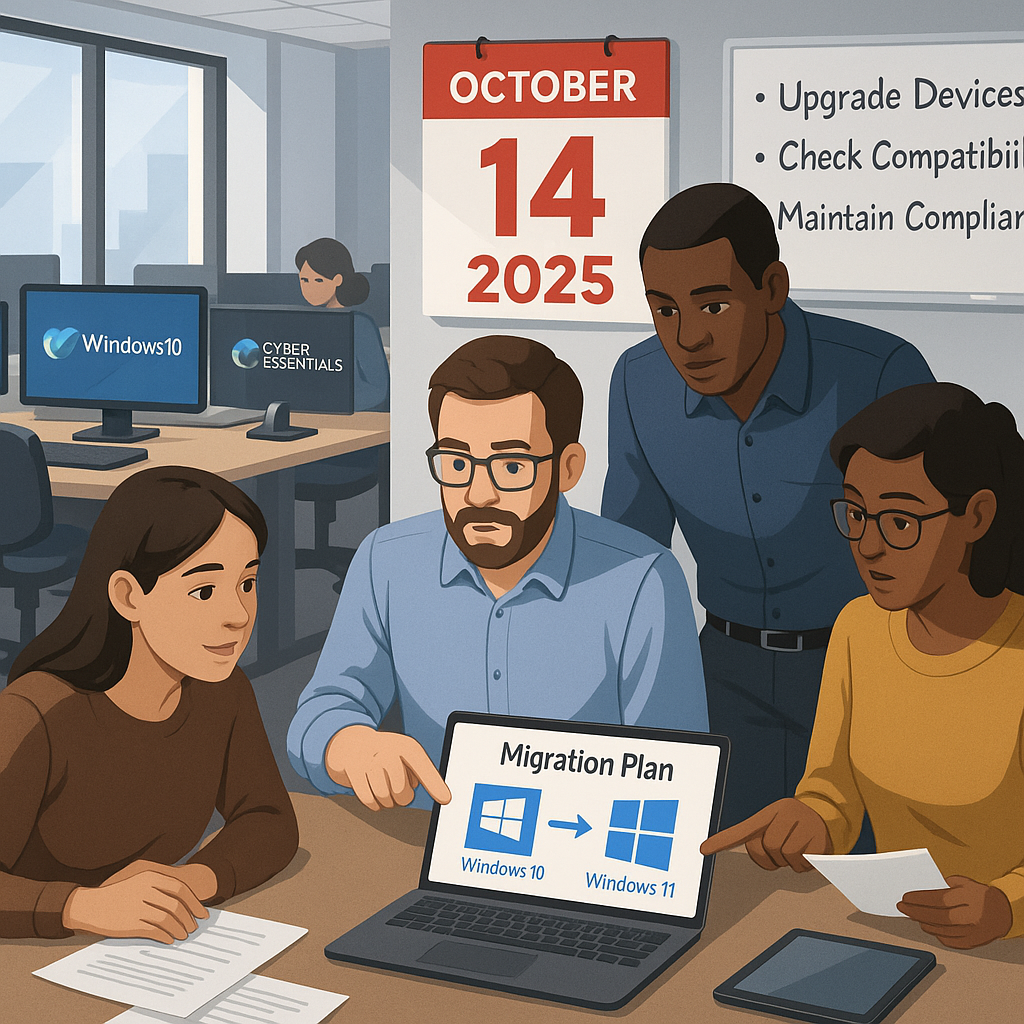Jaguar Land Rover Cyberattack: Lessons Every Business Should Learn
In September 2025, Jaguar Land Rover (JLR) confirmed it had suffered a major cyberattack that forced production lines to a halt, disrupted dealerships, and exposed data. While the immediate headlines focus on disrupted car deliveries and parts shortages, the real story for business leaders is what this incident reveals about organisational risk, resilience, and cybersecurity readiness.
What Happened at Jaguar Land Rover?
On 31 August 2025, Jaguar Land Rover experienced a significant cyber incident affecting its IT systems. According to the company’s official statement, JLR isolated its global applications to contain the threat, disrupting normal operations. Factories, including Solihull, paused production, and dealerships worldwide were unable to register new cars or supply parts.
JLR has confirmed that some data has been affected, though the scale of compromise is still being investigated. A cybercriminal group called Scattered Lapsus$ Hunters has claimed responsibility, reportedly boasting of access to internal systems.
This is not an isolated attack: it’s part of a rising wave of cybercrime targeting global supply chains, manufacturers, and enterprises.
Why This Matters for Businesses
The JLR incident shows how a single cyber event can cascade into multiple areas of a business:
-
Operational downtime – Stalled production and disrupted sales.
-
Reputational risk – Headlines linking a luxury brand with data breaches.
-
Regulatory exposure – Potential scrutiny under UK GDPR and EU data protection laws.
-
Financial impact – Lost revenue, remediation costs, and potential fines.
For organisations across all industries, this case underscores that cybersecurity is now a boardroom issue, not just an IT problem.
Five Key Lessons for Business Leaders
1. Speed of Response Protects More Than Systems
JLR’s decision to shut down its systems immediately likely prevented further compromise. For other businesses, this is a reminder to plan for quick, decisive action. Every minute counts in containing an attack.
Action point: Review your incident response plan. Does your leadership team know who makes the “shut it down” call? Have you rehearsed it under pressure?
2. Beware of Technology Monocultures
Analysts note that over-reliance on a single vendor ecosystem (such as Microsoft 365, Azure, or Active Directory) can create a single point of failure. If attackers gain access, the interconnected nature of services can magnify the damage.
Action point: Audit your technology stack. Are you overly dependent on one provider? Consider diversification and segmentation to reduce systemic risk.
3. Identity and Access Management Is the Front Door
Cybercriminals often exploit weak or legacy accounts, stale admin credentials, or missing multi-factor authentication. Once inside, they move laterally with ease.
Action point: Strengthen identity security. Enforce multi-factor authentication everywhere, remove unused accounts, and adopt least-privilege access principles.
4. Understand Who and What Has Access
The modern business ecosystem is a web of suppliers, apps, and integrations. Each one represents a potential entry point. In JLR’s case, disruption across supply chains highlights the importance of visibility and control.
Action point: Maintain an up-to-date access map of all third-party connections and integrations. Apply rigorous due diligence on vendors and insist on cybersecurity standards.
5. Move Towards Zero Trust
The “trust but verify” model is outdated. Today’s reality requires a Zero Trust architecture: no user, device, or system is implicitly trusted. Every request is verified.
Action point: Start small with Zero Trust principles. Segment networks, monitor east-west traffic, and introduce continuous authentication.
Building a Resilient Organisation
Learning from the Jaguar Land Rover cyberattack, businesses should focus on practical steps to strengthen resilience:
-
Invest in incident response readiness – Run tabletop exercises, simulate ransomware scenarios, and train executives as well as IT teams.
-
Embed cybersecurity into governance – Boards should treat cyber risk with the same seriousness as financial risk.
-
Achieve Cyber Essentials certification – Cyber Essentials and Cyber Essentials Plus provide a strong baseline of security controls, independently verified. These certifications not only reduce cyber risk but also demonstrate compliance to customers and regulators.
-
Strengthen supply chain resilience – Go beyond internal controls by carrying out a supplier assurance audit. Understanding how your vendors handle security is critical because attackers often exploit weak links in the chain. Businesses should require suppliers to meet minimum standards and verify them regularly.
-
Prioritise data protection – Encrypt sensitive data, monitor access, and prepare clear communication plans in case of a breach.
-
Adopt continuous improvement – Cyber threats evolve daily. Security must be a living strategy, not a one-off project. Keep up to date with a threat intelligence service.
These measures not only reduce the likelihood of a successful attack but also build customer trust and create a competitive advantage.
What Happens Next for Jaguar Land Rover?
JLR continues to work with third-party cybersecurity specialists to restore its global systems in a controlled manner. Regulators are being notified, and customers whose data is impacted will be contacted directly.
The coming weeks will reveal more about the scale of the breach, the financial cost, and the company’s long-term response. But for other organisations, the message is already clear: learn from JLR’s experience before it happens to you
The Jaguar Land Rover cyberattack proves that cybersecurity is not only about technology — it’s about resilience, governance, and trust at the highest level. Customers, regulators, and partners all want evidence that your organisation can withstand disruption and protect sensitive data.
For business leaders, the real question isn’t “if” but when:
If a cyberattack hit tomorrow, would your business have the certifications, supplier assurance, and response capability to keep operating and maintain trust?
Organisations that invest in structured frameworks like Cyber Essentials, Cyber Essentials Plus, and Supplier Assurance Audits are better placed to answer “yes” with confidence.
Update: Escalating Impact and Government Loan
The Jaguar Land Rover cyberattack has moved far beyond an IT issue and is now creating national economic challenges. What began as a JLR cyber incident that shut down production lines has developed into a crisis requiring direct government intervention and sparking wider debate about supply chain resilience and cybersecurity.
Investigations have confirmed that customer and employee data was compromised during the breach. This raises serious concerns about regulatory enforcement under UK GDPR, as well as the risk of class action claims. Analysts warn that the long-term financial and reputational impact of the attack could be significant, with regulators and customers alike demanding accountability and transparency.
The disruption to production has been severe. JLR’s plants in Solihull, Wolverhampton, and Halewood have been suspended for almost a month, with no restart expected until at least 1 October. This extended downtime has put enormous pressure on the UK automotive supply chain. While JLR directly employs around 30,000 people in the UK, a further 100,000 jobs are tied to its supplier base. Some of these firms, particularly those reliant solely on JLR contracts, are reported to have only days of cash left.
In response, the UK government has announced a £1.5 billion loan guarantee for Jaguar Land Rover. The aim is not only to safeguard JLR’s operations but also to keep its supply chain afloat. Business Secretary Peter Kyle confirmed that the package comes with conditions requiring JLR to channel funds through its suppliers. However, there is still uncertainty about whether businesses further down the chain — those that supply the suppliers — will receive timely support.
Political figures, including Liam Byrne MP, have warned that further measures may be necessary. Byrne has compared the situation to the emergency Covid-era loan schemes and stressed that unless government and business work together more closely on economic security, large-scale cyberattacks on UK companies will become increasingly common.
Industry experts agree. Professor David Bailey of the University of Birmingham described the incident as a “wake-up call” for British businesses to take cybersecurity defences more seriously. Steve Morley of the Confederation of British Metalforming welcomed the government’s intervention but warned that speed is essential — funding must reach suppliers before they collapse. Others have raised concerns that repeated government support might encourage companies to underinvest in cyber insurance and resilience planning.
The Jaguar Land Rover case highlights how a single cyberattack on a major UK business can ripple through entire industries and demand government action. For every organisation, large or small, the lesson is clear: cybersecurity is no longer just about protecting data. It is about safeguarding jobs, maintaining supply chain resilience, and protecting long-term economic stability
Further Updates
Supply Chain Fallout and the Need for Assurance
The cyberattack at Jaguar Land Rover shows just how fragile supply chains can be when one organisation’s defences fail. Analysts estimate the cost to the UK economy at around £1.9 billion, with over 5,000 organisations impacted across JLR’s supplier network and downstream services. The ripple effect from one major manufacturer caused factories to pause, orders to vanish, and smaller suppliers to face cash-flow collapse.
Such a wide-scale failure highlights the urgent need for stronger supplier assurance. Businesses that regularly assess and monitor their vendors’ cybersecurity posture are far better placed to prevent disruption and bounce back faster if an incident occurs. By enforcing minimum security standards, insisting on audits, and reviewing third-party controls rigorously, organisations can identify weak links before attackers exploit them.
Protect your Organisation Today
With Cyber Essentials or go further with Cyber Essentials Plus. Already working with suppliers? Strengthen your defences by booking a Supplier Assurance Audit now.
%20(1)%20(1).png?width=309&height=69&name=image-001%20(2)%20(1)%20(1).png)


